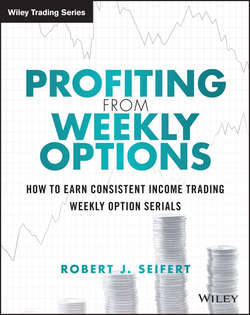Читать книгу Profiting from Weekly Options - Seifert Robert J. - Страница 9
На сайте Литреса книга снята с продажи.
Chapter 1
Market Psychology: The Mind-Set of a Trader
The South Sea Bubble 1711–1721: Trade, War, and Government Collusion
ОглавлениеThe South Sea Company was established in 1711 as a partnership between the British Treasury and the merchant class. England had been in a battle with Spain since the early 1700s in what is referred to as the “War of Spanish Succession.” The war had been very costly; the Crown need to finance its debt, and the Lord Treasurer Robert Harley came up with a good idea: Sell a franchise!
He granted exclusive trading rights to a group of merchants in the “South Seas.” It is a common misconception that the “South Seas” were in the Pacific, but in eighteenth-century Europe, the term referred to South America and the Caribbean Sea, not the Pacific.
The first round of financing granted the company “exclusive” trading rights for the sum of £10 million (approximately £500,000 million in 2014 £). In effect, the merchants convinced investors to take stock in the company and replace the bonds issued by the English Treasury. In exchange, the government granted the company a permanent annuity paying a little more than 5 percent. The merchants quickly resold the notes and guaranteed a profit to investors from the Treasury “in perpetuity.” Today, we would call this arbitrage, and it is the way many investment banks generate billions in profit: Buy debt for one price, sell it for a discounted amount to investors, and take the difference and put it in their pocket.
The British government viewed the transaction as a layup. It would charge tariffs on trade from the “South Seas” to fund the interest and pocket the difference.
When the war with Spain was finally settled in 1713 by the treaty of Utrecht, the terms were not as favorable as the Crown or the merchants had hoped. Although there is no evidence the company had ever made dollar one, the Treasury was able to float another round of financing in 1717 for £2 million. The original notes were converted to the new debt and the government continued to pay the interest. Nowadays, financiers call this type of sovereign debt replacement Brady bonds in honor of the US Secretary of the Treasury whose ingenuity bailed out US banks and Latin America in the 1990s.
The new debt funded the original loans from 1711. Nevertheless, as time passed and the company still did not flourish, the Crown needed to raise more capital. In 1719, the company conceived of a new idea.
Exchange the existing debt for equity in the Crown!
The company proposed to buy the majority of the Treasuries debt for £30 million. In exchange, the government guaranteed to pay interest on the shares at a preferred rate of 5 percent for a period of eight years, and then 4 percent “in perpetuity.” To sweeten the deal, the shares were allowed to be traded, and any “appreciation” could be used to buy more shares.
Needless to say, this arrangement benefited the company and the Crown. Rumors circulated that the trading rights granted the South Sea Company in the “New World” were far in excess of what was being revealed (can you say “new economy stocks”?), which caused frenzied speculation. Trading in the winter and spring of 1720 drove the price of the stock up almost 400 percent. Greed pulled in even more investors anxious to be in on the big payoff. Insiders and the Crown were rumored to have made a killing.
In June 1720, after scores of joint-stock companies joined in the feast, Parliament – fearing a revolt by the general population – passed the “Bubble Act,” which forbad joint-stock companies from participating in unregistered issuance of stock. Unfortunately, this did not curb the bubble, but triggered even more aggressive buying of the South Sea Company stock. In a perverted way, the South Sea Company was viewed as a flight to quality!
Shares prices exploded, peaking at 1,000 percent of their issuance price from the final conversion of debt to stock in 1719. Finally, in August 1720, “No greater fool could be found,” and the prices started to tumble. In six weeks, it was all over. The price was back to £150.
What became of the South Sea Company?
It continued to exist until 1763, when it was disbanded. In between wars, it continued to serve as a front for the Crown's debt. In times of war, it virtually disappeared.
The hangover lasted for decades. Scores of ordinary citizens were broken. Bitterness was unbridled and knew no class. One of the biggest losers in the scam was Sir Isaac Newton, one of the most brilliant minds of all time. He never recovered financially and died in virtual poverty March 31, 1727, in an apartment with his niece and her husband.
